If you want to sell products, build an audience, or get your business in front of the right people, a website is a must. However, you might be wondering – how much does it cost to set up a website?
Naturally, the cost of website building depends on the method you choose, the size of your website, and the functionality you require. For instance, you can do it yourself or hire a developer. Meanwhile, there are still costs like web hosting, domains, and plugins to consider.
In this post, we’ll take a look at the main costs associated with website building. Then, we’ll help you decide whether you need a developer, and explore the ongoing costs of running a website. Let’s get started!
The Main Costs of Building a Website
How much does it cost to set up a website? That’s the key question. To answer it, we’ll need to take a look at the main fees associated with website building.
1. Domain Name
Every website requires a unique domain name which enables visitors to find it. The domain is the URL or web address that users enter in the browser search bar.
It consists of a domain extension (like .com or .org) and a root domain that usually references your business or brand:
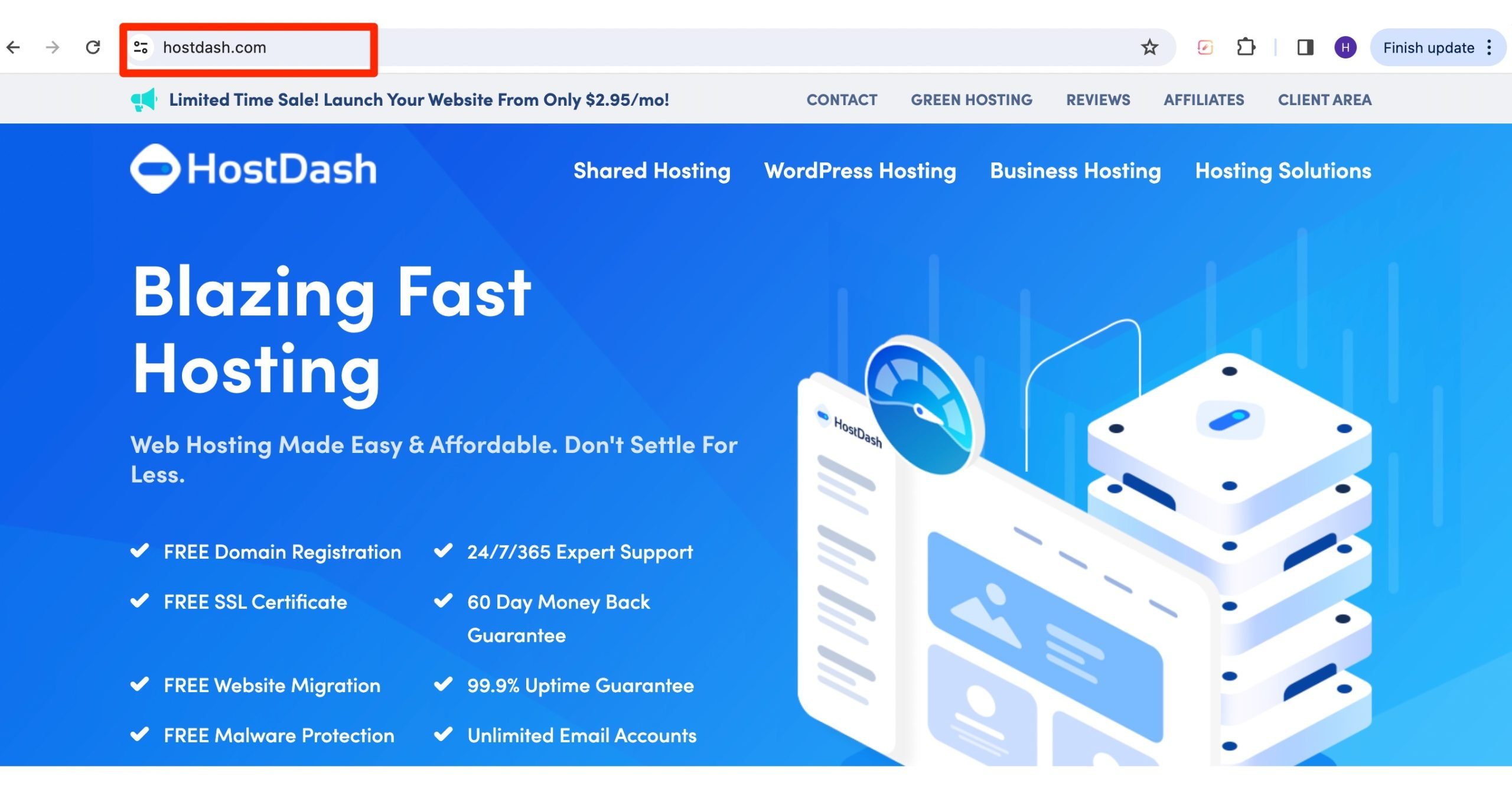
Typically, website owners obtain a domain name through a domain registrar. For example, you can use this free HostDash domain search tool to find your ideal domain:
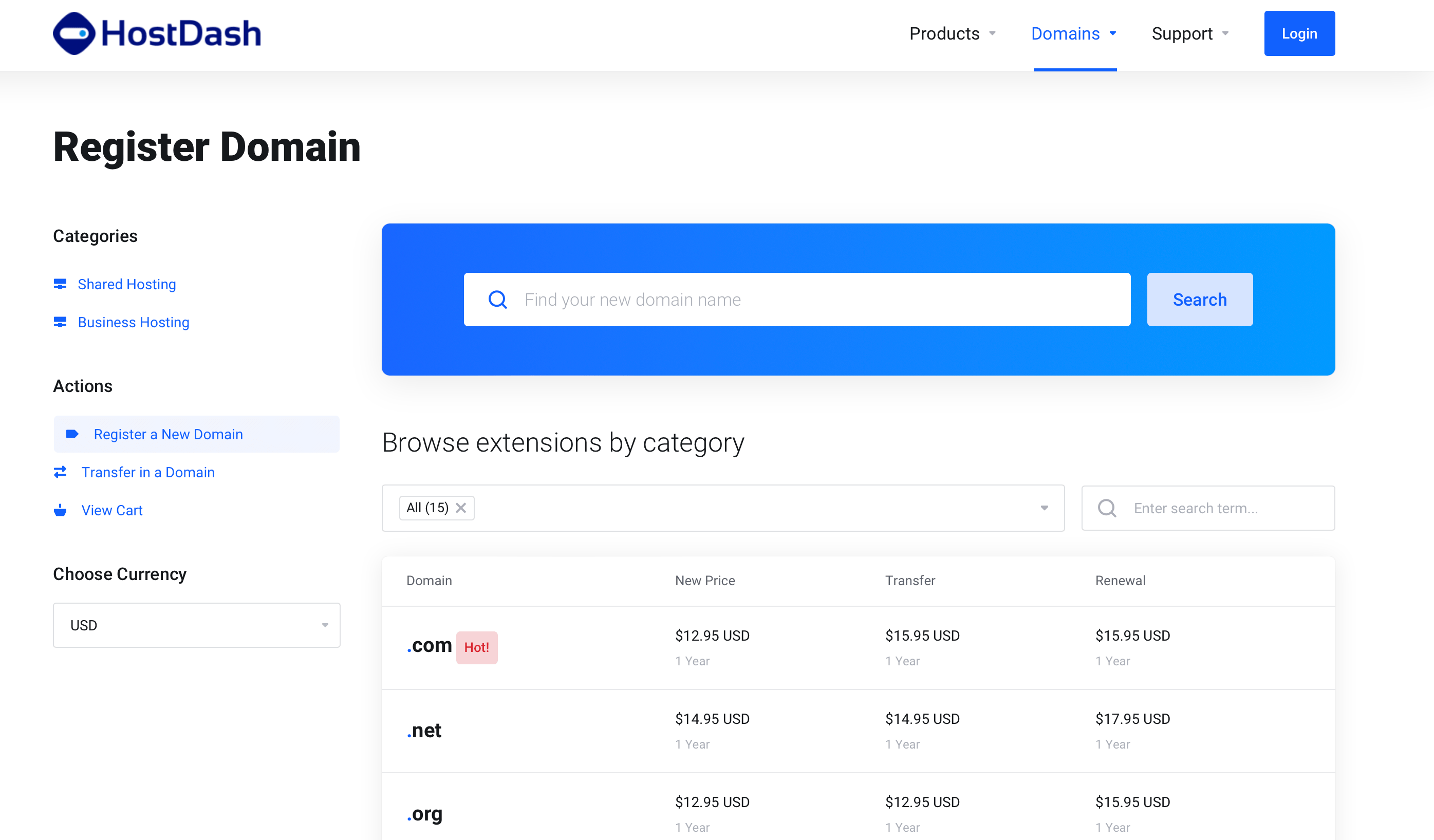
Then, you can select add-ons like domain privacy before you register and pay.
Premium domains can cost hundreds or even thousands of dollars. These provide more value because they’re short, memorable, and often feature well-established extensions like .com.
But, you can also find more affordable options that cost between $10 and $30 per year. Plus, certain web hosting providers like HostDash offer free domain registration with select web hosting packages.
2. Website Hosting
A web hosting provider is necessary to store website files and make your website available on the internet. That said, there are various hosting solutions with different features and costs.
For example, shared hosting is the most affordable option. It allows you to “rent” a portion of a web server alongside other website owners. In fact, HostDash provide shared hosting plans from just $2.95 a month:
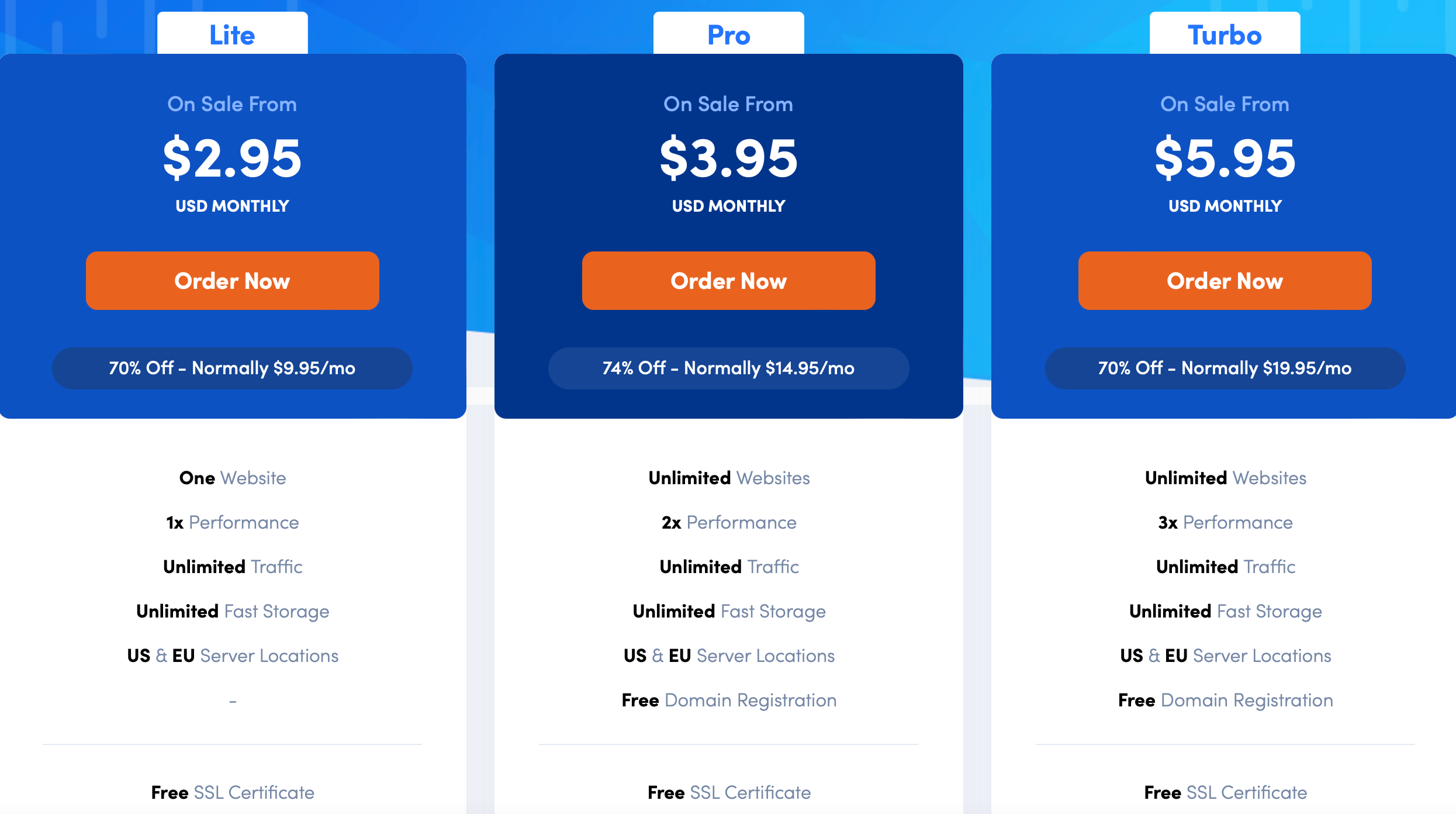
But, generally, if you need more resources (or have a high-traffic website), you might prefer a virtual private server (VPS) or a dedicated server – which are more expensive. VPS plans usually range from $30-$100. Meanwhile, dedicated packages can cost over $100 a month.
Managed hosting is a good choice for beginners since your web host will take care of important website maintenance tasks. For instance, HostDash provides dedicated WordPress plans (starting at $2.95) that come with WordPress pre-installed.
Plus, HostDash offers free domain registration, a free secure sockets layer (SSL) certificate, and a choice of server location. Plus, all plans support unlimited traffic and come with a 60-day money-back guarantee.
3. Plugins
With a domain name and a web hosting solution, you can get your website up and running. But, you may require extra functionality or special features to enhance your setup.
In that case, you can use plugins, add-ons, or extensions. For example, if you use WordPress, you can browse free plugins in the WordPress directory and install them via your dashboard:
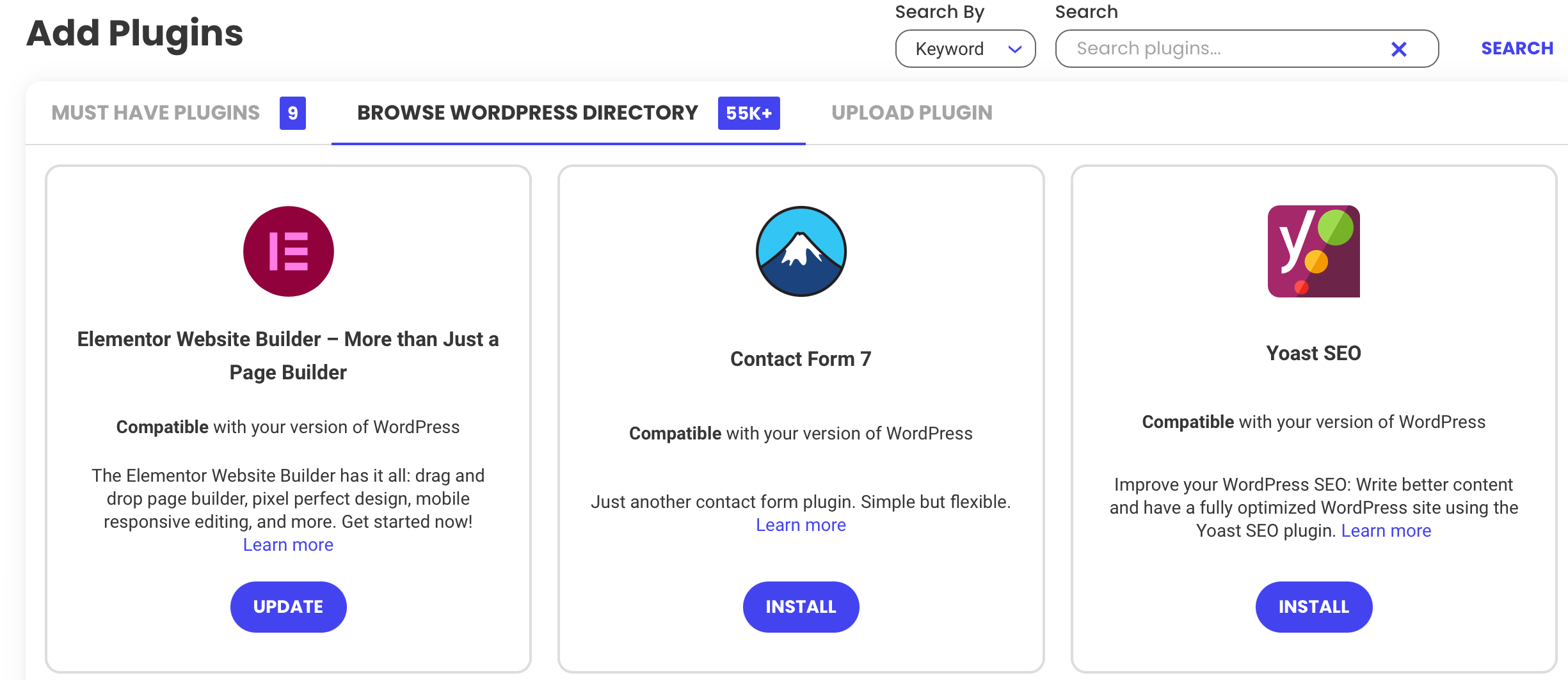
Other platforms like Wix and Squarespace make third-party extensions available through the website. This way, you can find solutions to set up an online store, sell memberships, improve search engine optimization (SEO), create opt-in forms, and more.
You’ll often find that many popular WordPress plugins are available for free. However, some companies also develop premium extensions that you’ll need to pay for.
For instance, Jetpack is a popular security and performance plugin which provides a powerful free version. But, you can also upgrade from $4.95 a month to access more features.
4. Themes and Templates
If you want to know how much it costs to set up a website, you’ll also have to consider themes and templates. These allow you to define the look and feel of your site.
Most themes come with ready-made designs for key elements like blog pages, contact pages, and the home page. Then, you can customize the layout to reflect your brand colors and fonts.
Better yet, there are tons of excellent multi-purpose WordPress themes like Astra:

You can also find specific options like photography themes and affiliate marketing themes.
If you use a different CMS or website builder, these might be referred to as “templates”. And as is the case with plugins, there are free and paid options.
For example, Divi is a popular WordPress theme, but it’s a premium solution that costs $89 per year. It comes with full website packs, AI features, and 24/7 support.
5. Ecommerce Functionality
If you want to sell products on your website, there are some additional considerations. As we mentioned, certain platforms like WordPress require a plugin or extension to add this functionality to your site.
The good news is that WooCommerce is a completely free plugin that comes with built-in payment gateways, optimized checkout pages, and supports multiple currencies:
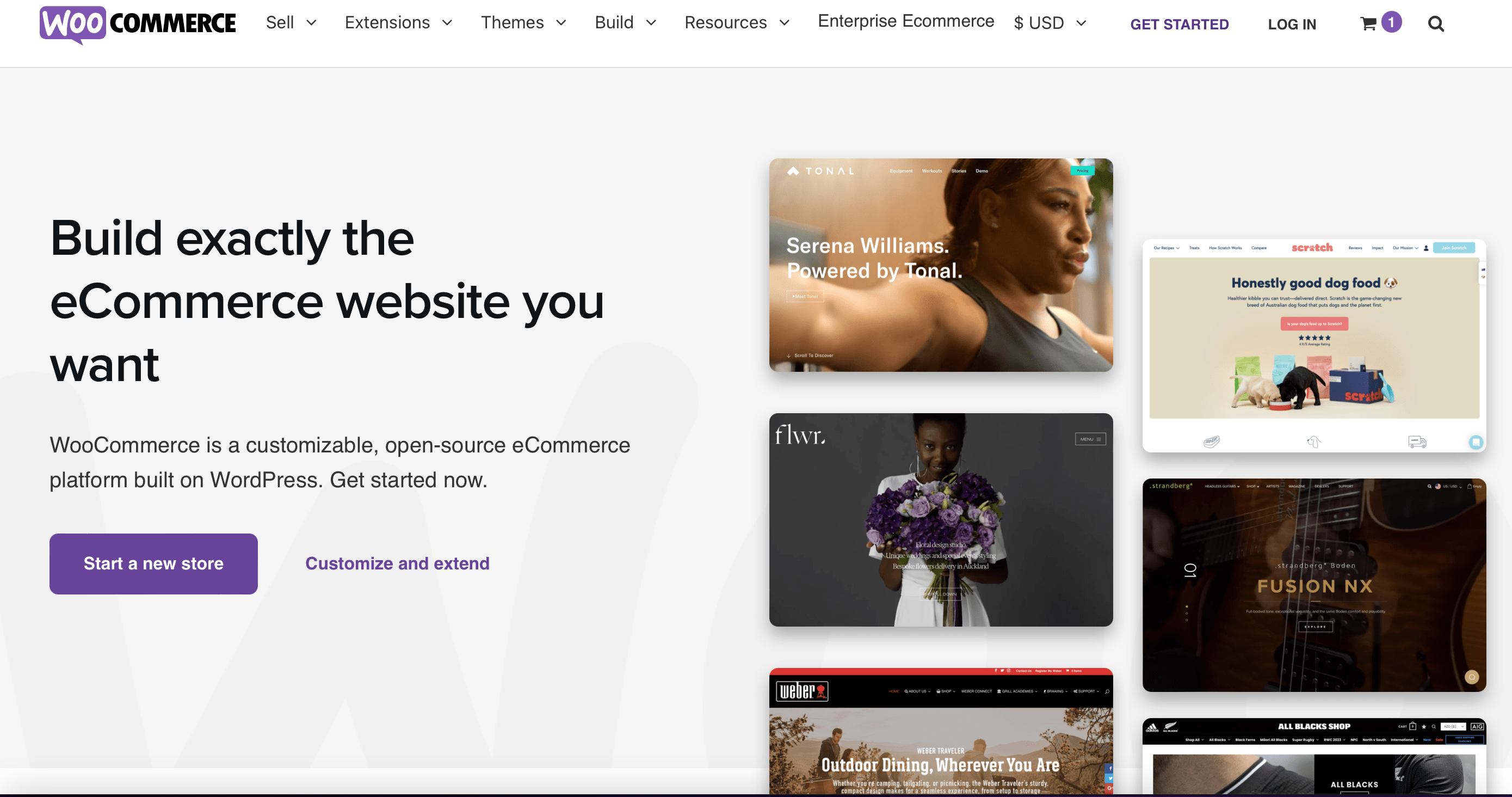
Still, you can also use free and paid extensions to install additional payment gateways, automate order fulfillment, enable shipment tracking, and more.
Meanwhile, website-building platforms like Squarespace may require you to sign up for a more expensive monthly plan to sell products and services. In fact, you’ll need at least the Squarespace Business plan which costs $23 a month.
How Much Does It Cost to Set Up a Website?
So, how much does it cost to set up a website? Well, that depends on how you do it. Here are the three main options you have:
- Build a website yourself using a content management system (CMS) like WordPress.
- Use a website building platform like Wix or Squarespace.
- Hire a professional developer if you have the budget, lack the time, or have super specific needs.
If you build a website yourself, the only costs can be domains and web hosting. But, with site-building platforms, you’ll typically pay a higher recurring fee.
Meanwhile, if you want to a hire a developer, you can use an agency, which usually costs hundreds of dollars. Or, you can find freelancers (on platforms like Fiverr) that provide the service from upwards of $80.
The Ongoing Costs of Websites
We’ve already covered how much it costs to set up a website. But, here are some ongoing costs you’ll also want to consider:
- Security. You might need to install a web application firewall, vulnerability scanner, or security plugin. You can find free options, but premium solutions (like Wordfence and Sucuri) offer plans that start at $119 and $199 respectively.
- Performance. If you want to speed up loading times, you can install a content delivery network (CDN), or use premium caching plugins. To give you an idea, WP Rocket offers caching services for $59 per year.
- Marketing. You might also accrue costs to promote your website if you launch pay per click (PPC) campaigns. Meanwhile, you can install premium lead generation tools like WPForms and OptinMonster. These tend to cost between $9 and $100 for one website.
- Scalability. There’s also the possibility that you get an increase in website traffic. In which case, you might need to upgrade your hosting package. For instance, if you switch your HostDash Lite plan to a Turbo plan, it will increase to $5.95 a month.
And, although it’s not an ongoing cost, there may be a time when you want to overhaul your website design. Naturally, you can do this yourself. But, if you choose to hire a freelance professional, prices start around $80.
How to Set Up a Website Yourself
Now that you know roughly how much it costs to set up a website, you might be ready to do it yourself. In that case, WordPress makes an excellent option, since it’s free and highly customizable.
To get started, you’ll need to purchase a domain name and web hosting. Then you’ll need to configure your server. However, if you’re a beginner, it’s best to choose a hosting provider like HostDash that will do this for you:

HostDash also bundles web hosting, a free SSL, and a free domain name together to keep costs low. Plus, website maintenance is simplified with free malware scans, daily backups, and 24/7 customer support.
Conclusion
A website offers a great way to expand your audience, improve brand awareness, or even launch a business. However, with so much conflicting information online, you might not know exactly how much it costs to set up a website.
Although you have the option to use website builder tools or hire a developer, the most affordable option is to build a website yourself. You can use a beginner-friendly platform like WordPress, and the main costs will be domains, hosting, and premium plugins and themes.
HostDash offers some of the most affordable web hosting packages. And, you’ll get access to tons of extras like free domains, SSL certificates, malware protection, and 24/7 support. Get started today!
Featured image credit: Pexels.



